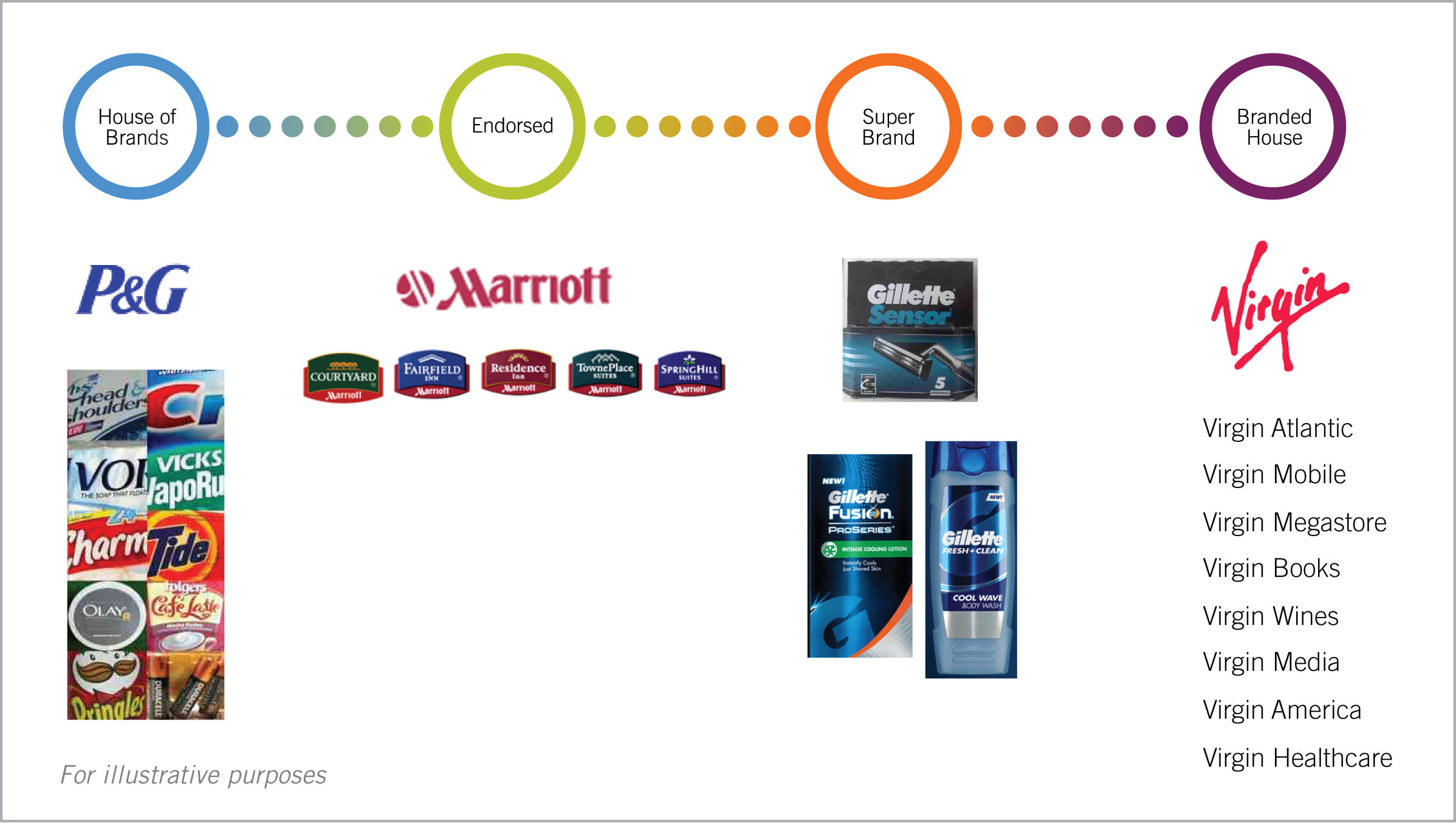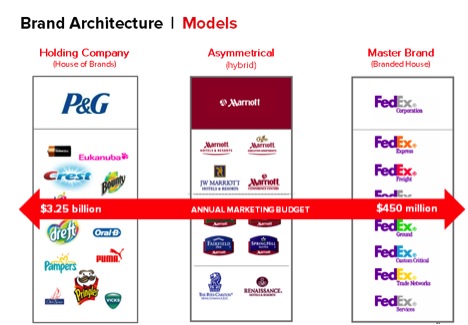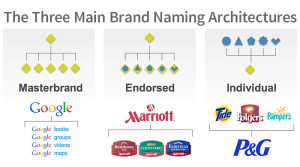In my previous job as Marketing Specialist for a mid-sized company, which I will call Company X, I encountered a situation that was rather odd to me – the number of brands within one company. The brand portfolio was enormous, which was not only confusing to our customers, our employees as well.
A typical scenario for Company X was as follows – there was the name of the actual company (Company X) which was a brand, several divisions within Company X that all had brands, then within the divisions there were the actual customer facing product units that all had their own brands. These customer facing units within the divisions were often added to the portfolio through an acquisition, so they come with their original branding that would then get updated by Company X, and the new branding would often hold elements of the old branding (and updating the old to new branding would take years – so there was effectively 2 brands during this long transition).
At times, an acquisition would produce the exact same product as a current Company X unit, so instead of merging the two together, Company X would create a third brand that the two similar brands would fall under. In total, with all the creation of brands, there were over 40 various brands floating around, some that actually produced products and employed people, and others that served as umbrella brands to link similar divisions together. I found myself asking which logo we should use on various marketing pieces almost every day. The Marketing Manager may want the Company X logo, the division logo, the umbrella brand logo, or the logo of the actual product unit, and sometimes she wanted all 4 on the marketing piece.
To go a step further, there was also a desire to cross sell when the audience for a product was the same for another, so she would want to put another product unit’s logo on the marketing piece as well, which created confusion amongst customers. Consequently, cross selling efforts often failed and there was a lack of brand loyalty. The branding often seemed out of control, and here’s why: there was no strategy behind branding decisions.
According to Mark Ritson, an industry expert on branding, when brand architecture is a mess, it leads to sales force conflicts, cannibalization, and the marketing consequently appears weak because it is spread too thin (2015). He also points out that profitability will suffer and an organization will hurt from the confusion internally and contradictions, which I witnessed at Company X firsthand. When employees lose sight of the corporate brand and what it is about, then they also forget the larger vision of what the company is striving to achieve (Gulsvig, 2014). Additionally, brands are expensive to maintain and need their own marketing and communications plan and strategy to be successful (Gulsvig, 2014). With a large brand portfolio comes the cost to maintain it, which many companies can’t afford, and as a result the sub-brands will suffer from a lack of support (Gulsvig, 2014). Another negative to having multiple brands is that customer may become loyal to a sub-brand, not the overall line of products the company offers, and they miss out on cross selling opportunities.
Company X’s solution to brand confusion and cross selling was to come up with a new umbrella brand, which means new business cards, a new website to create and maintain, updating existing flyers to include the new logo, the list was endless. In a case study at Procter & Gamble and Unilever, they went from a combined 2,000 brands to a combination of 30 brands where they make the majority of their profits (Ritson). Marketing can be more impactful and strategically focused when it is narrowed down, which in turn will increase profits. So the answer to the question – Can a company have too many brands? – is a resounding YES!
References
Gulsvig, K. (2014, March 5). Bolstering the master brand: streamline brand architecture is key. BrandingBusiness. Retrieved from: http://www.brandingbusiness.com/blogs/bolstering-the-master-brand-streamlined-brand-architecture-is-key
Ritson, M. (2015, Feb. 4). Why too many brands threaten the strategy. Branding Strategy Insider. Retrieved from: http://www.brandingstrategyinsider.com/2015/02/why-too-many-brands-threaten-the-strategy.html#.VaLSak2h1ow




3 Responses to Can a company have too many brands?